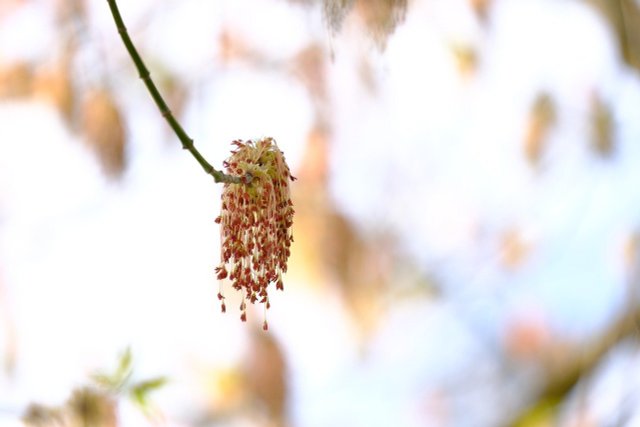The ash maple is a North American pioneer woody plant that is also popular in this country. In this article you will learn how to plant the tree in your garden and what you need to consider when caring for it.
The ash maple is originally from North America and grows there mainly on lakeshores and in riparian forests. It belongs to the pioneer woods – that is, it settles on soils where other plants do not like to settle. The ash maple, with Latin name Acer negundo, belongs to the maple genus and is a comparatively small tree. It grows about 10 to 15 meters high and grows about 40 to 80 centimeters per year. In March, before the foliage sprouts, it bears drooping yellow to reddish flowers.
By the way, there are male and female ash maples. The trees pollinate themselves by the wind, the help of insects is not necessary for this. However, for birds and rodents the tree is one of the most important food plants. These feed on its numerous fruits.
Caution: For horses and donkeys, the seeds of the ash maple are poisonous and sometimes deadly.
Contents
Ash maple: location and soil
The ash maple thrives in both sun and partial shade. Older trees are frost-hardy to over 30 degrees below zero – so you can plant the ash maple in colder locations without any problems. It is important that you find it a wind-protected spot, as the branches of the ash maple break relatively easily in strong winds.
As far as the soil or substrate is concerned, the ash maple is absolutely undemanding as a pioneer plant. It can cope with almost any soil, including dry, sandy as well as loamy, wet soils. It prefers slightly acidic substrates, but it can tolerate lime as well.
Planting ash maple: this is how it’s done

No matter what tree you want to plant in your garden: You should always plan enough space for it. Think not only about the tree itself, but also about plants in the immediate vicinity that, for example, will no longer receive sunlight from it. Pay special attention to nearby paved paths. The growing roots could eventually damage them.
Planting an ash maple is quite uncomplicated. Here’s how to do it:
- Get a young ash maple from a specialty store.
- Dig a sufficiently large planting hole. This should be at least twice as large as the root ball of the young plant.
- Unlike many other plants, you do not need to prepare the soil for the ash maple.
- Place the plant with the root ball in the hole and fill it up with the excavated soil.
- Do not forget to water well!
Maintaining and propagating the ash maple
The ash maple is a low-maintenance tree that does not require much attention.
- You should only water it at the beginning. Especially during drought, you should make sure that the freshly planted tree does not dry out.
- You do not need to fertilize the tree. Too much nitrogen would make the branches even more brittle.
- Ash maples are very tolerant of pruning, but pruning is not absolutely necessary.
- The tree is quite robust against pests and diseases. Insect infestation is almost non-existent. In rare cases, fungal diseases, such as powdery mildew, can attack the ash maple. What you can do then, you can read here: Fighting powdery mildew: These home remedies will help your plants.
- With luck, you can propagate the ash maple via cuttings. Cut five to ten centimeter long pieces from a shoot of the tree and plant them in a shady spot in the garden in humus-rich soil. It is better to cut a few more cuttings – the success rate is only about ten percent.









